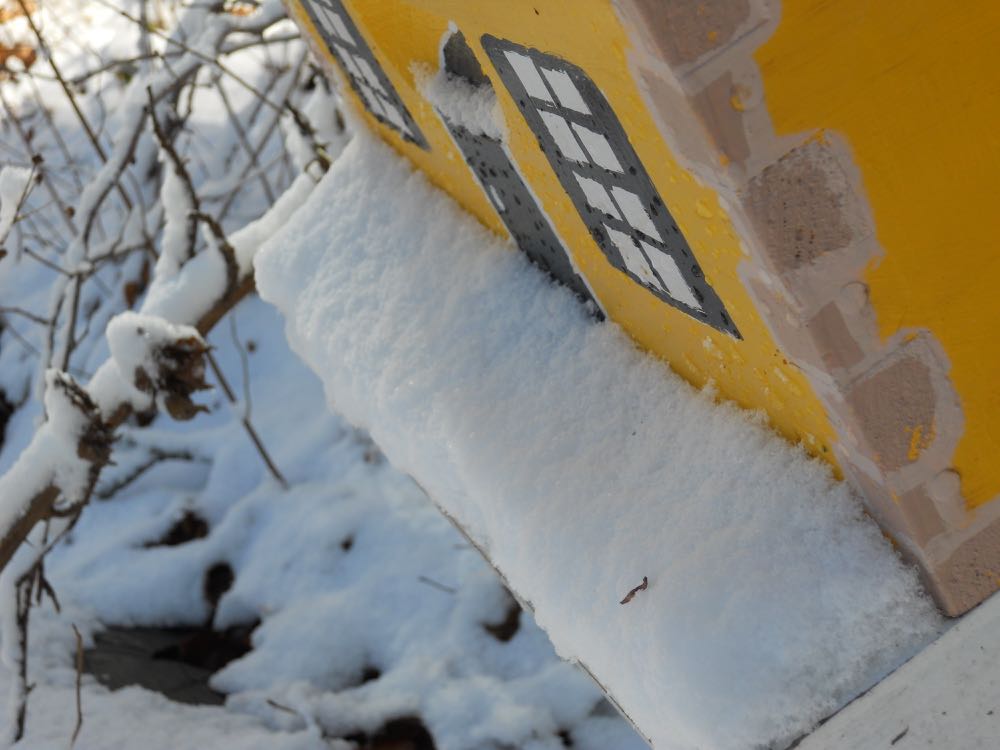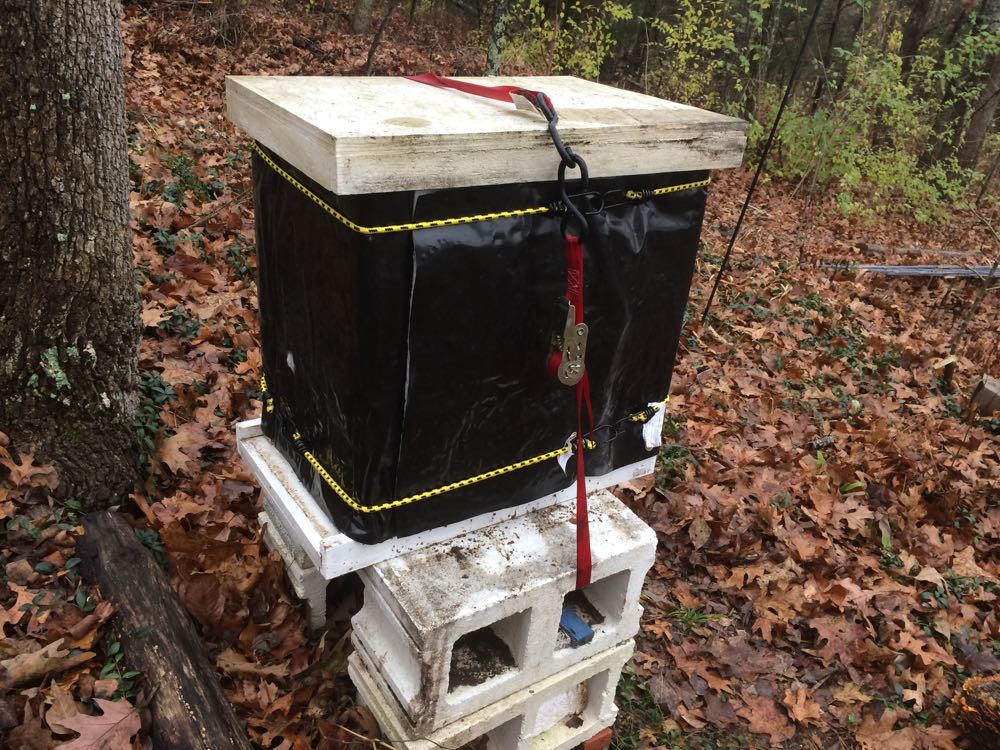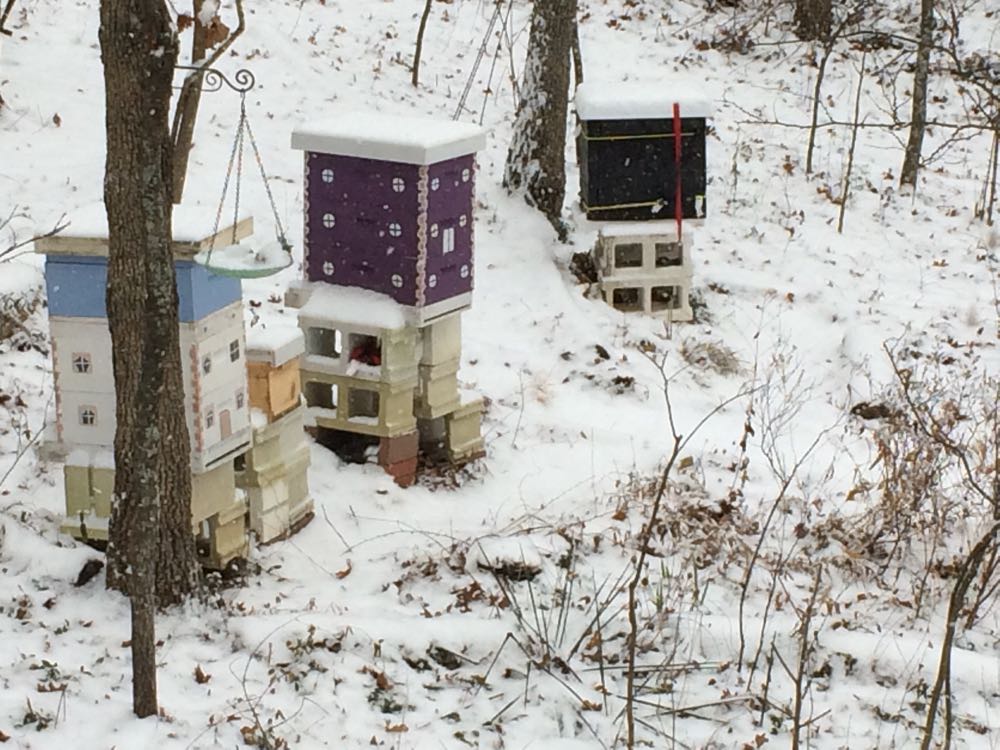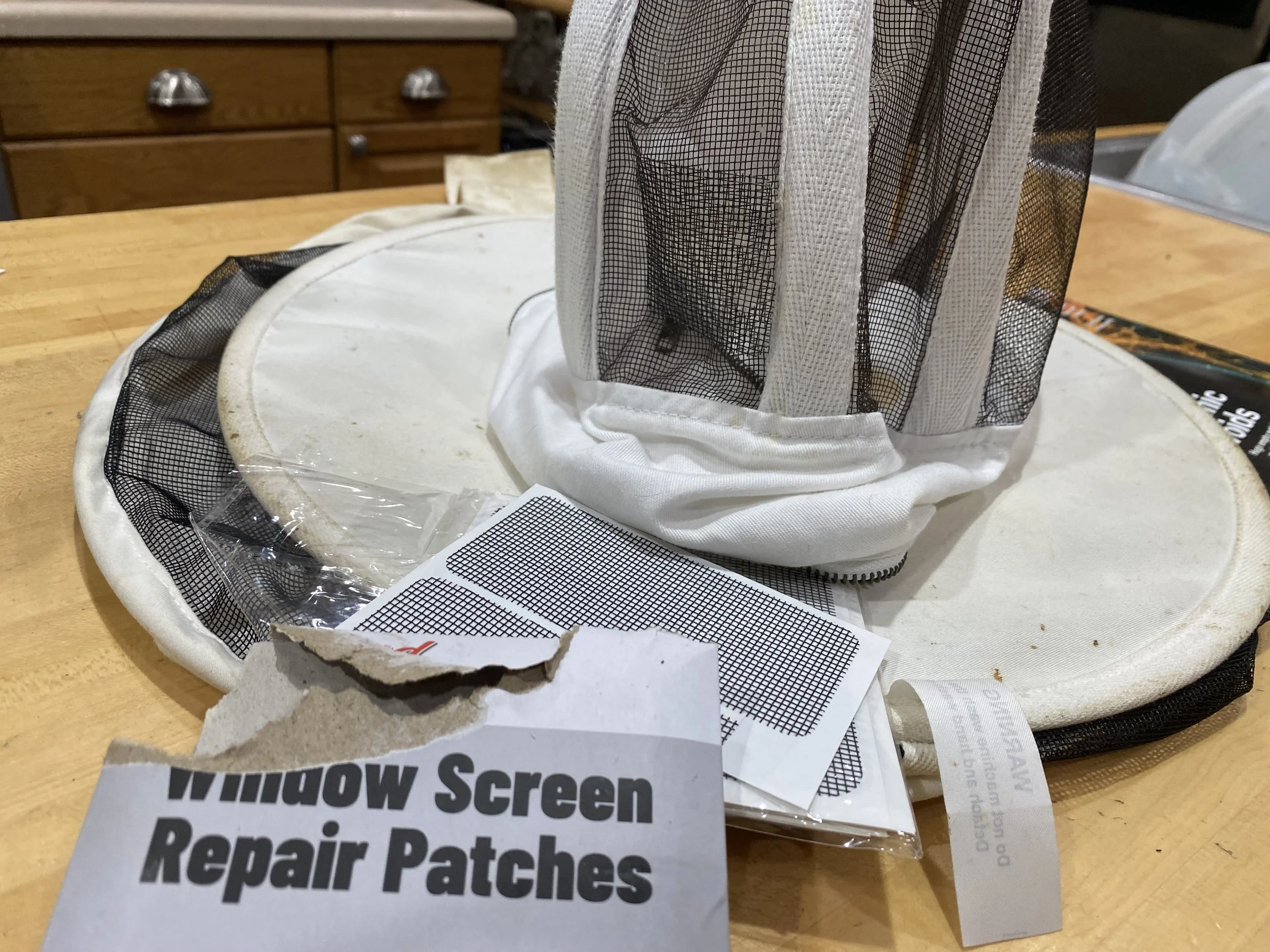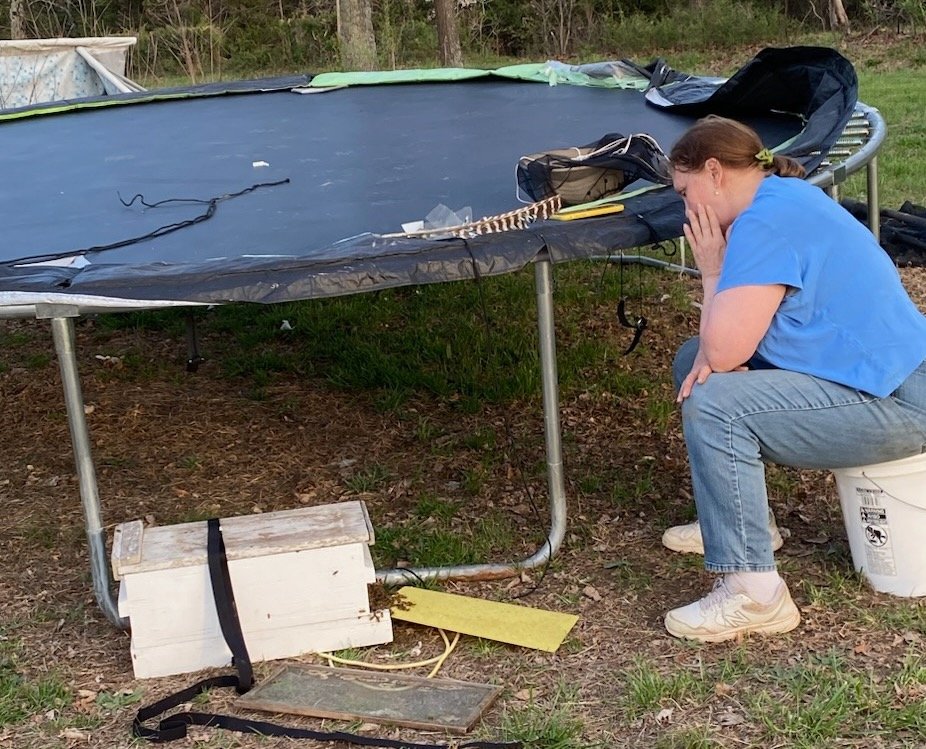Winterizing Honeybee Hives
/Some of my equipment and supplies to get my honeybee hives ready for winter this year.
Winterizing Honeybee Hives
I'm not going to say I waited until the last minute to get this done this year but let's just say the temperatures dipped precipitously the following day.
My holdup was getting those emergency sugar cakes dry enough to place on the feeding shims I have at the top of the honeybee hives. I keep the shims on all year to give the bees a second entry and exit to the hive, especially in winter when the front of the hives can get covered in snow.
Snow can easily close up the small hive entrance and leave honeybees without a way to get out.
The other challenge with getting hives ready for winter is making sure the quilted insulated black hive wrap doesn't cover the entrance, either.
After wrapping the hives to help keep the wind out, I check the front to make sure it's still open.
I also have a wrestling match of sorts using those red straps. I find them hard to release to elongate them so I also invested in these bungee cords. Did I pick them out because of their color scheme? Well, what do you think??
I bought these bungee cords because of their colors, very bee-inspired.
The bungee cords hold the insulated black wrap at the top and bottom of the hives. Then I use the red straps to secure the hives to the concrete blocks I painted white earlier to discourage ants.
Another advantage of having concrete blocks is that I can tuck entrance reducers and other equipment into the side cubby holes.
This colony is tucked in and ready for winter weather, including emergency food at the top.
Before I strap down the hive, I added emergency sugar cakes to the shim at the top. This year, I also left two medium supers full of honey on each colony.
Last year, I found the colonies at the top of their honey-full medium at Christmas so I had to add sugar cakes almost two months earlier than I have in the past. Not knowing what the weather was going to be like this fall and winter, I decided to hedge my bets and give them extra honey, which is much better than these emergency sugar cakes I make.
Emergency sugar cakes formed in bread pans nicely fit across my honeybee hives.
In addition to the emergency sugar cakes, I added a 1x1 inch square of winter pollen patty next to or just under a corner of the sugar cake. Anything larger and I will most likely be feeding small hive beetles instead of honeybees.
Some of my honeybees snacking on the sugar cakes at Christmas this year.
I don't break the propolis seals on the hives through winter but I can peek under the hood at the top and place my hand inside to find the heat generated by where the cluster is sitting. Once I know where the cluster is located, I can add the sugar cakes over that space so that I know the bees will hit the emergency food as they work their way up through the honey frames.
Honeybees don't hibernate, they literally shiver in a cluster while they consume honey to give them energy. And if/when they run out of honey, the sugar cakes come in handy to supplement them.
Another view of the honeybees on the emergency sugar cakes at the top of the hives.
Once the hive is given the extra sugar cakes, it's time to close it up and hope that all will go well as the colony braves winter.
Sugar cakes not only feed but help absorb moisture out of the hive during winter.
I had a few peppermint candy canes left over so I added those in the shims. I read somewhere the peppermint is a natural antibacterial so I placed one in each hive wishing the girls a happy Christmas.
Last year, snow arrived before I had all of my hives wrapped, I beat the snow this year.
Most of these colonies were spring splits with one being a swarm from a known bee tree. The two mother colonies had drone frames removed mid-spring to break the varroa mite cycle and mid-August were tested for the mites. The alcohol wash had less than 2 mites per 100.
Next year, winterizing will start in August with a varroa mite treatment that ends several steps I will take to minimize varroa in all ofthe colonies, starting in spring. Until then, I hope the colonies are dry and well fed so they can make it through winter. This is the hardest time for me, looking out my window to see the hives out in the cold and wondering if they are okay....
Charlotte


